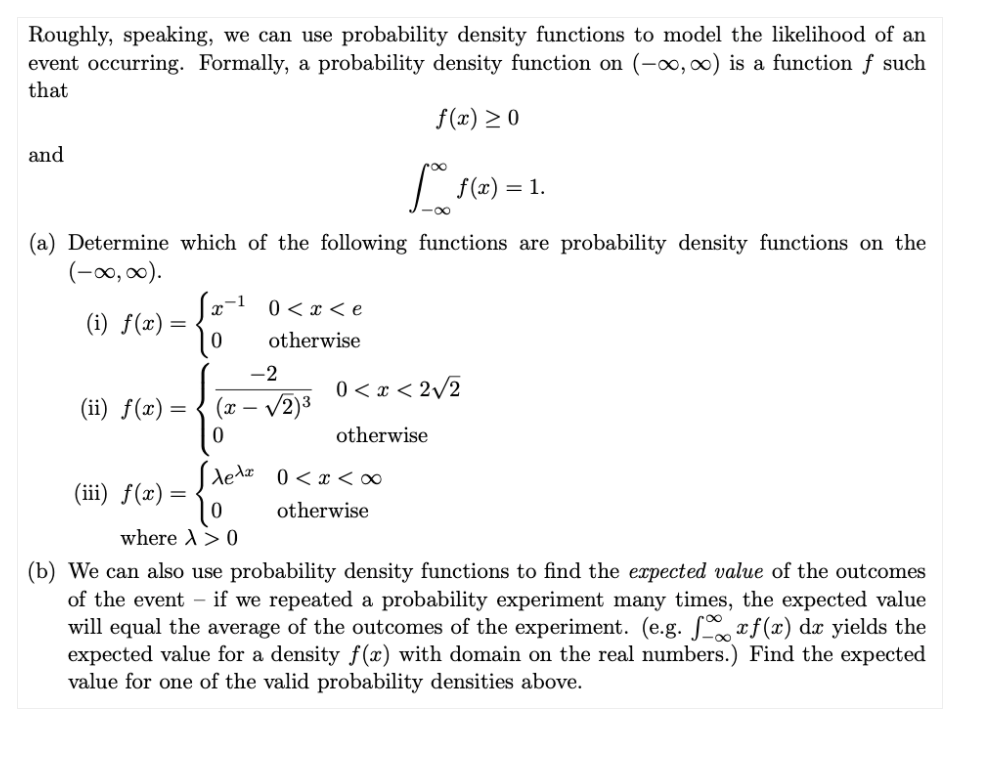Roughly, speaking, we can use probability density functions to model the likelihood of an event occurring. Formally, a probability density function on (-∞,0) is a function ƒ such that f(x) > 0 and | f(x) = 1. (a) Determine which of the following functions are probability density functions on the (-0, 00). x-1 0 0
Roughly, speaking, we can use probability density functions to model the likelihood of an event occurring. Formally, a probability density function on (-∞,0) is a function ƒ such that f(x) > 0 and | f(x) = 1. (a) Determine which of the following functions are probability density functions on the (-0, 00). x-1 0 0
Functions and Change: A Modeling Approach to College Algebra (MindTap Course List)
6th Edition
ISBN:9781337111348
Author:Bruce Crauder, Benny Evans, Alan Noell
Publisher:Bruce Crauder, Benny Evans, Alan Noell
Chapter1: Functions
Section1.2: Functions Given By Tables
Problem 11E: A Troublesome Snowball One winter afternoon, unbeknownst to his mom, a child bring a snowball into...
Related questions
Question

Transcribed Image Text:Roughly, speaking, we can use probability density functions to model the likelihood of an
event occurring. Formally, a probability density function on (-0, 0) is a function ƒ such
that
f(x) > 0
and
| f(x) = 1.
(a) Determine which of the following functions are probability density functions on the
(-0, 00).
0 < x < e
(i) f(x) =
otherwise
-2
0 < x < 2/2
(ii) ƒ(x) =
(x – /2)3
otherwise
dedx 0<x <∞
(iii) f(x) =
otherwise
where A> 0
(b) We can also use probability density functions to find the expected value of the outcomes
of the event - if we repeated a probability experiment many times, the expected value
will equal the average of the outcomes of the experiment. (e.g. L xf(x) dx yields the
expected value for a density f(x) with domain on the real numbers.) Find the expected
value for one of the valid probability densities above.
Expert Solution
This question has been solved!
Explore an expertly crafted, step-by-step solution for a thorough understanding of key concepts.
Step by step
Solved in 2 steps with 2 images

Recommended textbooks for you

Functions and Change: A Modeling Approach to Coll…
Algebra
ISBN:
9781337111348
Author:
Bruce Crauder, Benny Evans, Alan Noell
Publisher:
Cengage Learning


Functions and Change: A Modeling Approach to Coll…
Algebra
ISBN:
9781337111348
Author:
Bruce Crauder, Benny Evans, Alan Noell
Publisher:
Cengage Learning
